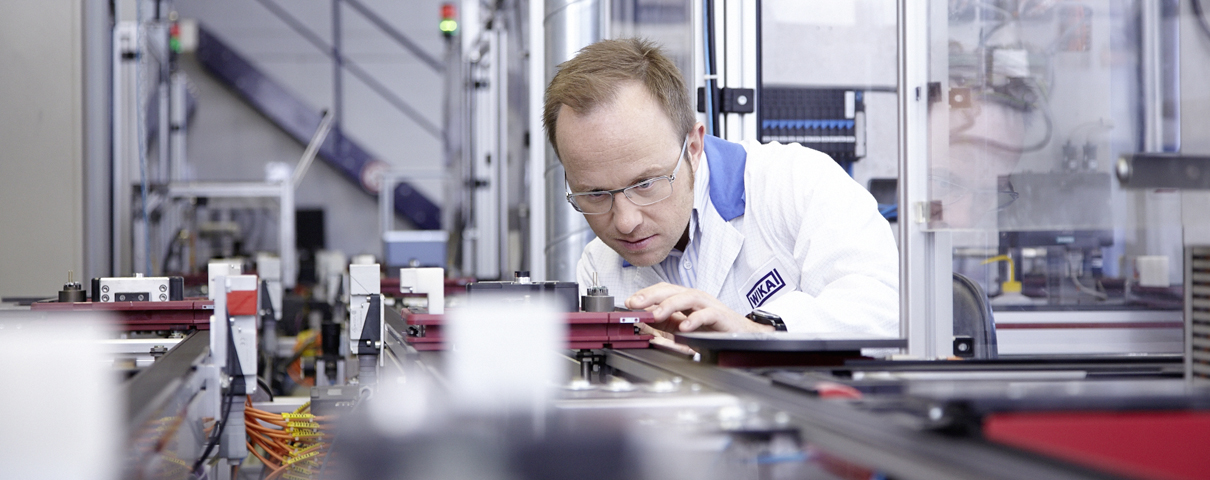
WIKA offers a complete range of gas density monitors to accurately measure sulfur hexafluoride (SF6) and other gases. Our temperature-compensated gas density solutions use one of four types of pressure sensing technologies: bimetal, bellow, reference chamber, and electronic sensing with Wheatstone bridge.
Smart monitoring systems use a condition-based approach – repair or replace something only when the need arises – rather than relying on just preventive or reactive maintenance. The online monitoring of SF6 gas with trend analysis reduces the risk of failure and lowers operating costs by using such a condition-based strategy. No more unnecessary work within defined maintenance cycles. Fewer service calls to rectify faults. Less plant downtime. Higher profit margins.
Using a gas density monitor also means faster turnaround times and greater safety. If the system warns of a leak, technicians can use a portable SF6 detector to quickly determine the exact location of the damaged switchgear, line, or transformer, and then repair it. An online system makes the process even easier by giving a visual of the leak’s location.
Power plants and T&D equipment are exposed to all sorts of weather, including extreme temperatures, high humidity, strong winds, and sudden changes in ambient pressure. Our products for SF6 gas density monitoring are solid, built to withstand harsh conditions and provide many years of reliable service.
Temperature Compensation
A common application issue when it comes to gas measuring instruments is temperature compensation. At a constant volume, the pressure of an ideal gas increases proportionally with temperature. This is Gay-Lussac’s law. Therefore, any change in the ambient temperature will mean a similar change in the pressure (Figure 1), even though the gas density remains constant. To determine the actual gas density, a pressure measuring instrument must take into account – or compensate for – variations in temperature (Figure 2). The result is the temperature-compensate pressure (Figure 3), a displayed value that corresponds to the actual gas density.

Temperature compensation of gas measuring instruments
Temperature Compensation of Various Instruments
WEgrid Products offers several types of temperature-compensated gas density monitors and gas density indicators.

GDM-100-TI-D gas density monitor with Modbus output
Bimetal: Gas density monitor and indicator — A bimetallic strip between the movement and the measuring tube converts changes in temperature into changes in length. The indication on the dial is constant, despite the temperature-induced pressure variations. Only declining pressure due to loss of gas is displayed.- Metal bellows: Gas density monitor with external temperature probe — The temperature compensation with external capillary sensor enables temperature measurement directly in the SF6 gas tank.
- Reference chamber: Gas density switch — In WIKA’s gas density switches, a compartment filled with pure SF6 serves as the benchmark. A stainless steel sensor measures the density of the gas inside medium- or high-voltage equipment, and compares it against the gas inside the reference chamber. If the equipment’s gas density drops to a specified level, the switch sends out a warning. Since the switch is hermetically sealed, the reference gas is impervious to variations in ambient temperature or atmospheric pressure. The result: No fluctuations in the measured value, and no false alarms caused by environmental changes. In addition, having a reference chamber means these switches do not require recalibration.
- Electronic sensor: Gas density transmitter — A pressure transmitter specially developed for measuring SF6 density delivers a temperature-compensated output signal. Its electronic sensor uses a Wheatstone bridge to detect the pressure and temperature of the SF6 inside gas-insulated equipment, and then uses an electronic evaluation system to accurately calculate the current gas density. For even greater protection against ambient temperatures and pressures, the stainless steel transmitter is hermetically sealed and fully welded.
WEgrid Products has an extensive portfolio of modular instruments specifically designed and optimized for monitoring SF6 gas density in medium- and high-voltage equipment. Customers have their choice of mechanical/mechatronic and electronic instruments with various accuracies, measuring ranges, output signals, alarm functionalities, and other features. Contact our SF6 specialists for more information about industrial SF6 gas handling.

